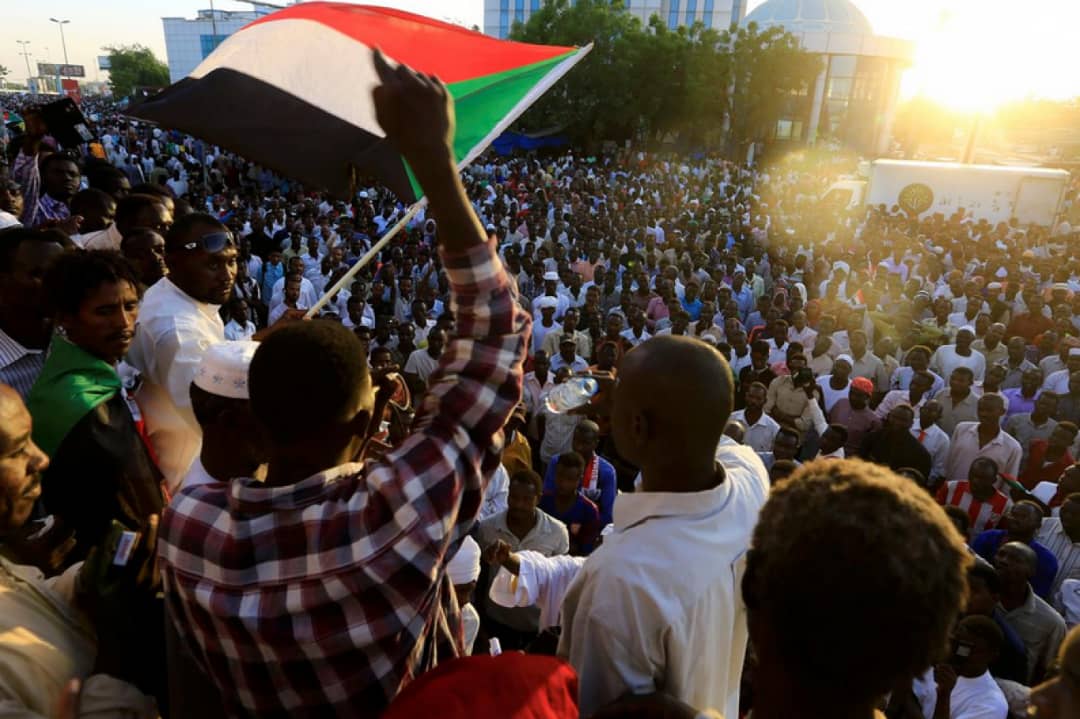With the Prolonged War… Joy and Sorrow Accompany the Sudanese Revolution
Report by Noah Adam Hudo

The December 2018 revolution in Sudan remains etched in the memory of many Sudanese, especially those who took part in the marches and protests, due to the excessive violence by security forces that led to the killing of over 500 people, thousands of injuries, and hundreds of missing persons. This has left behind deep wounds and sorrow within Sudanese society, particularly among the mothers of the victims. Yet, the joy of the revolution reaching its goal — the fall of former president Omar al-Bashir after 30 years in power — was shared by the majority of the people.
Sudan stands among the few African and Arab nations with a long history of popular struggle and repeated revolutions against authoritarian rule — especially military regimes — which have burdened the country and hindered its progress toward development.
One of the most prominent of these struggles was the December 2018 revolution, hailed as one of the greatest uprisings in Sudanese history that captivated the world. The country had previously experienced two historic revolutions: the October 1964 revolution that overthrew the rule of General Ibrahim Abboud, and the April 1985 uprising that ended the regime of Marshal Jaafar Nimeiry. Each of these revolutions has its own unforgettable stories and sacrifices.
Despite the ongoing war in Sudan, millions of Sudanese still celebrate the achievements of the revolution and the realization of their dreams and aspirations, even as many express sorrow over what they see as the loss of a great revolution that failed to fulfill its goals and the hopes of the revolutionaries.
A Defining Moment
What distinguished the December revolution from its predecessors was that it followed the longest period of authoritarian rule in the country, as Bashir’s regime had held power for more than three decades.
This revolution marked a turning point, not only in Sudan’s history but also in the collective memory of peoples striving for freedom and justice.
In discussing the details, secrets, and lessons of the December revolution, journalist Hussein Saad told Mashawir platform:
“There are similarities between the December revolution and previous ones — for example, the role of trade unions in 1964 and 1985, and the role of the Sudanese Professionals Association in the December revolution. Likewise, the earlier revolutions witnessed unity among political parties, as was the case with the Forces of Freedom and Change (FFC) during December. Moreover, difficult economic and social conditions were common factors in all three revolutions.”
Weak Experience
Saad added:
“One of the main reasons for the diminished momentum of the revolution was the weak leadership of the transitional government that took power after the revolution’s success, due to the political inexperience of many of its leaders. There was also a lack of clear vision and political project from the Forces of Freedom and Change, and internal confusion, which negatively impacted the performance of the transitional government. This, in turn, led the revolutionary street to distance itself from supporting the government.”
He continued:
“Although the FFC had many shared principles, the internal divisions were clearly reflected in how they dealt with crucial and decisive issues for the revolution and the state, such as normalization with Israel, economic decisions made by the government, and the Juba Peace Agreement. Moreover, they failed to distance themselves from the military component — which is known to represent the deep state and forces of darkness.”
Saad also pointed out:
“The lack of popular protection for the transitional government was due to widespread dissatisfaction with its overall performance, particularly among resistance committees and revolutionary youth.”
He noted that “one crucial factor that contributed to the success of the December revolution was the clear division within the military and security leadership, along with the fragmentation of the Islamist movement — between those supporting Bashir’s candidacy for the 2020 elections and those who opposed or hesitated — which weakened the regime and paved the way for the revolution to achieve its goals.”
Mass Mobilization
In the same context, women’s rights activist Salma Al-Sheikh told Mashawir platform:
“The December revolution succeeded due to several key factors, most notably the massive public participation from all regions and social classes of Sudanese society. This gave the revolution undeniable legitimacy. Youth leadership, whether from the Sudanese Professionals Association or the resistance committees, played a vital role in organizing, coordinating, and creatively steering the movement. Years of repression, poverty, unemployment, and limited opportunities had created a politically aware public that better understood its rights and rejected tyranny.”
She added:
“Another core reason was the peaceful nature of the revolution and the protesters, which confused the regime and undermined its justification for violent repression. The revolution broke the barrier of fear among the public, with significant and active participation by Kandakas (Sudanese women revolutionaries) who often led marches that began with a zaghrouta (ululation). Despite facing brutal violence, their presence at the frontlines played a major role in the success of the protests.”




